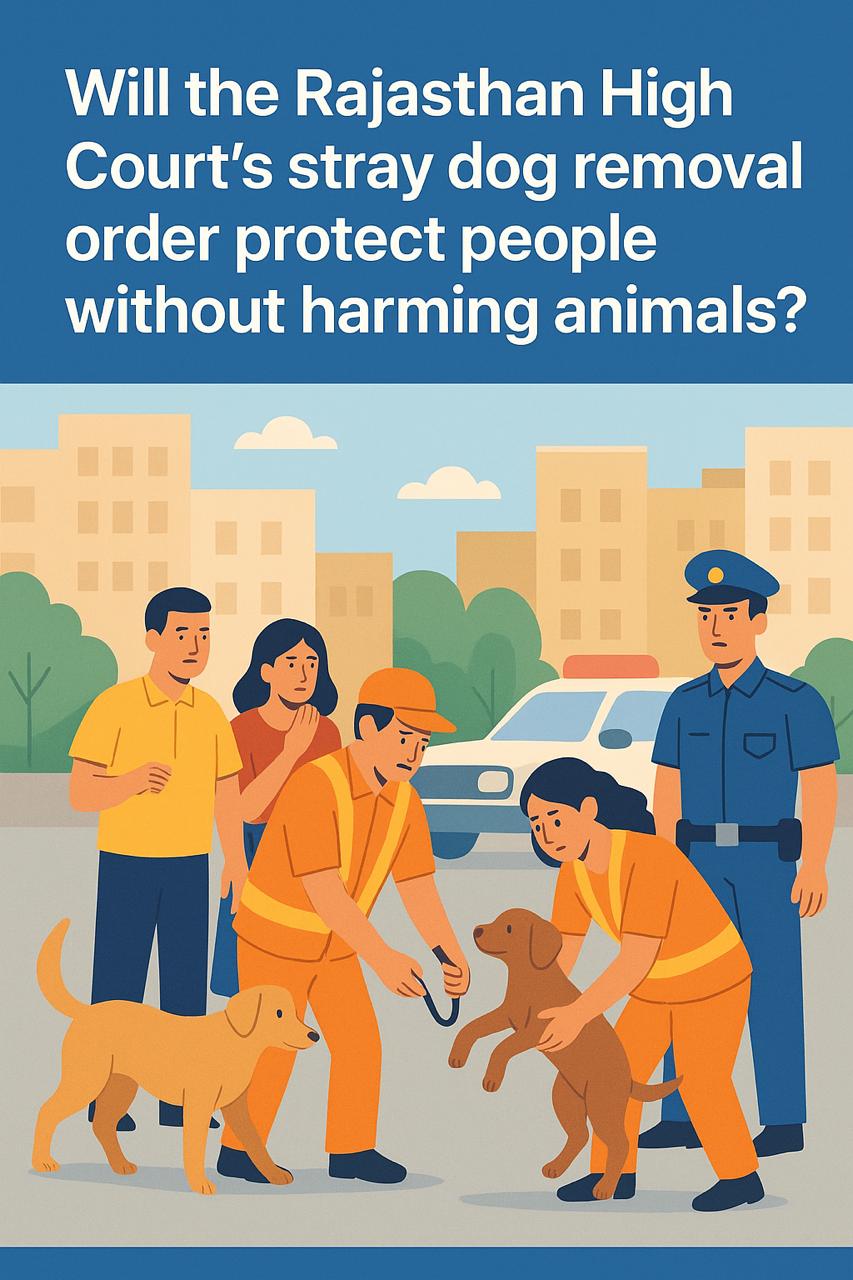Introduction
The Rajasthan High Court stray animals order of August 11 is yet another judicial attempt to push municipal bodies into doing what they should have been doing for years keeping roads safe and free from stray dogs, cattle, and other animals. The bench of Justices Kuldeep Mathur and Ravi Chirania put forward a detailed action plan patrols along the highways, penalties for those who obstruct the work yet beneath these instructions lies an uncomfortable truth. Local bodies, despite having clear legal duties and years of public complaints, have too often done little to tackle the problem.
Rajasthan High Court Stray Animals Order Calls for Special Drive Across Cities
The Rajasthan High Court stray animals order directs municipal bodies in Jaipur, Jodhpur, and Udaipur to carry out a “special drive” to remove stray dogs and other animals from roads. It extends the mandate to National and State highways authorities, requiring them to patrol and clear highways regularly. Officials have been given powers to take legal action against anyone obstructing the operation a telling reminder that even basic public safety measures often face resistance.
Rajasthan High Court Stray Animals Order Highlights Municipal Lapses
The fact that the Rajasthan High Court stray animals order exists at all is an indictment of municipal performance. Dealing with stray animals is already part of the legal responsibilities of Central and State authorities, yet the situation has only worsened. The Court stepped in on its own after a wave of dog bite cases and deadly accidents caused by stray cattle, particularly on busy highways. The amicus curiae was blunt poor upkeep and a failure to act have turned the roads into danger zones and dented Rajasthan’s reputation as a tourist state.
Rajasthan High Court Stray Animals Order Faces Timing and Enforcement Challenges
Some critics say the Court’s order comes too late and leans heavily on written compliance reports. The plan is detailed from setting up separate shelters to offering helpline numbers for complaints but the fact remains, it took years of neglect to get to this stage. Without strict monitoring, this “special drive” risks being a short-term sweep, only for the animals to return once the spotlight fades.
Rajasthan High Court Stray Animals Order Balances Safety with Public Sentiment
One of the more delicate issues the Court touched on was public feeding of animals. It asked people to restrict this to designated shelters. This, however, treads into sensitive territory mixing public safety with religious and cultural beliefs is never simple, and enforcing such a rule could stir political trouble. The judges have tried to strike a balance, but whether city officials can carry this out without pushback is still an open question.
Conclusion: Rajasthan High Court Stray Animals Order Real Change or Another Short-Lived Directive?
The order is welcome in spirit but also highlights deep gaps in governance. Day-to-day urban safety isn’t really the Court’s job it’s the responsibility of municipal bodies that run on public funds. If this directive isn’t backed by consistent action, oversight, and clear accountability, it may end up as yet another strong statement in print that changes little on the streets.
Author Information:
By Karthikeyan Ganesan, a law student from KKC College of Law, reporting on law and technology for Nyayasphere. Karthikeyan always likes to stay updated with current trends and important information regarding the law and cases across the country.

